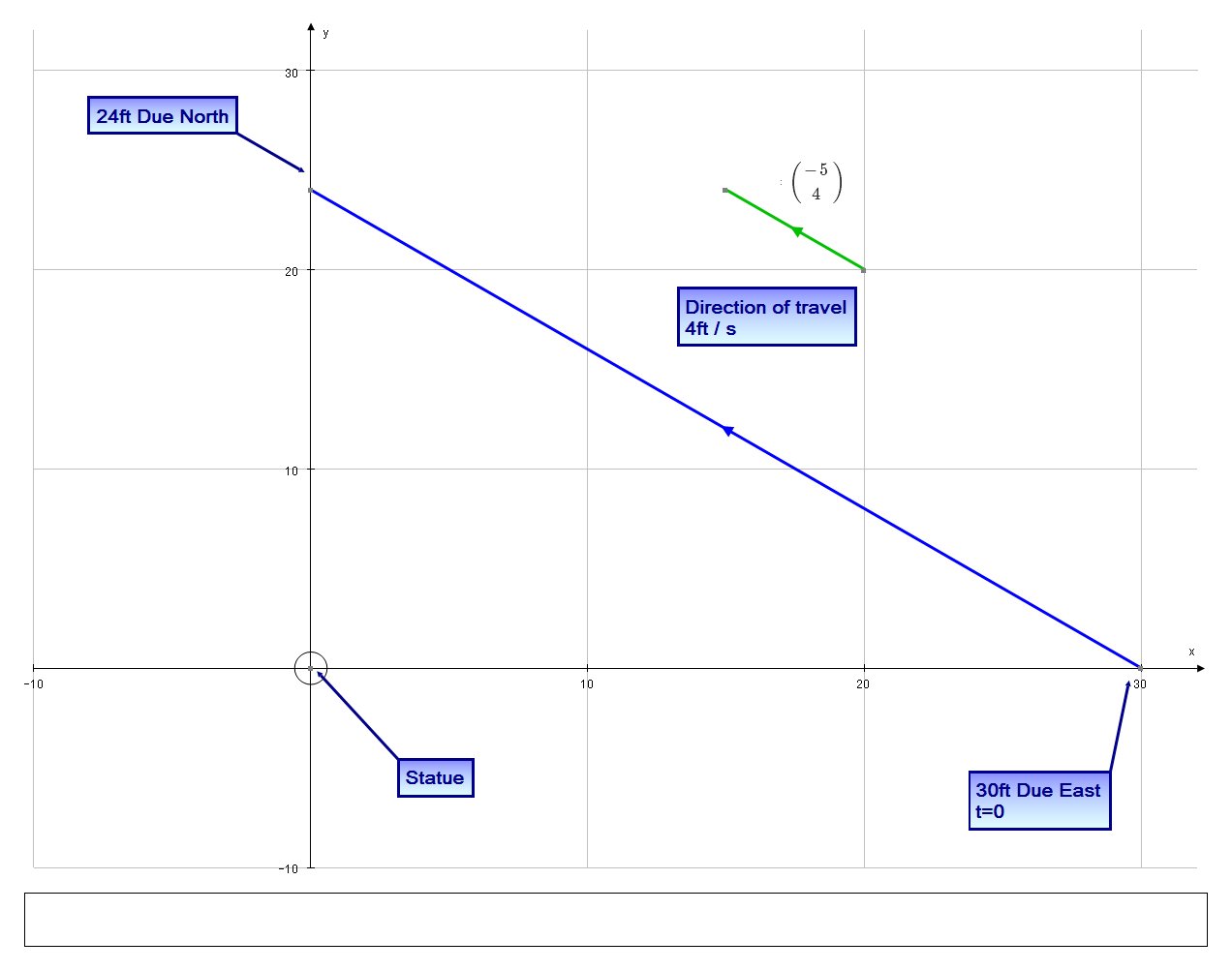How do write parametric equations for Margot's position t seconds after s if Margot is walking in a straight line from a point 30 feet due east of a statue from a point 24 feet due north of the statue and walks at a constant speed of four feet per second?
1 Answer
The equations are:
# x(t) = -30 - (20sqrt(41))/41 t #
# y(t) = (16sqrt(41))/41 t #
Explanation:
I prefer to use vectors for this type of question;
Assume the statue is at the origin

The direction of travel is given by the vector:
# ( (-30),(24) )# , or# vec(d)= ( (-5),(4) )#
In order to find the velocity we need to scale this direction vector by an appropriate factor,
ie we require:
# sqrt((-5lamda)^2 + (4lamda)^2)) = 4 #
# :. sqrt(25 lamda^2 + 16 lamda^2) = 4 #
# :. sqrt(41 lamda^2) = 4 #
# :. sqrt(41) lamda = 4 #
# :. lamda = (4sqrt(41))/41 #
And so our velocity vector is given by:
# vec(v) = (4sqrt(41))/41( (-5),(4) )#
And so we get the vector equation for the displacement using:
# "displacement" = "initial position" + "velocity" xx "time" #
to give:
# vec(s) = ( (-30),(0) ) + (4sqrt(41))/41( (-5),(4) )t #
We can now easily for parametric equation:
# x(t) = -30 + (4sqrt(41))/41(-5) t #
# \ \ \ \ \ \ \= -30 - (20sqrt(41))/41 t #
And;
# y(t) = 0 + (4sqrt(41))/41(4) t #
# \ \ \ \ \ \ \= (16sqrt(41))/41 t #

